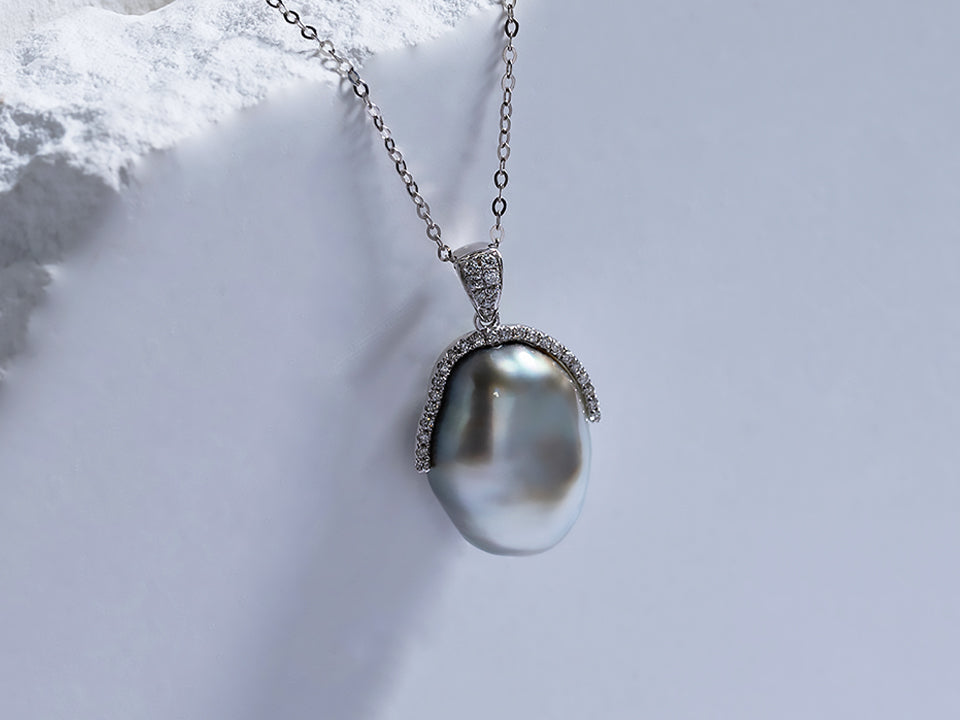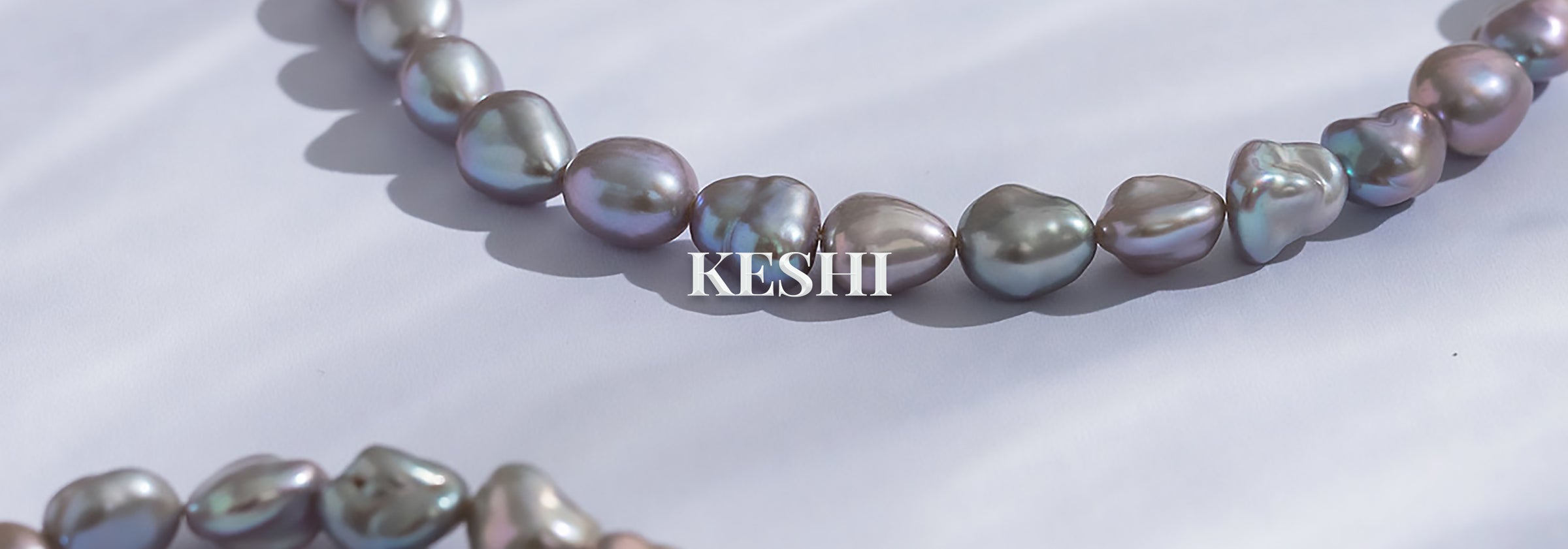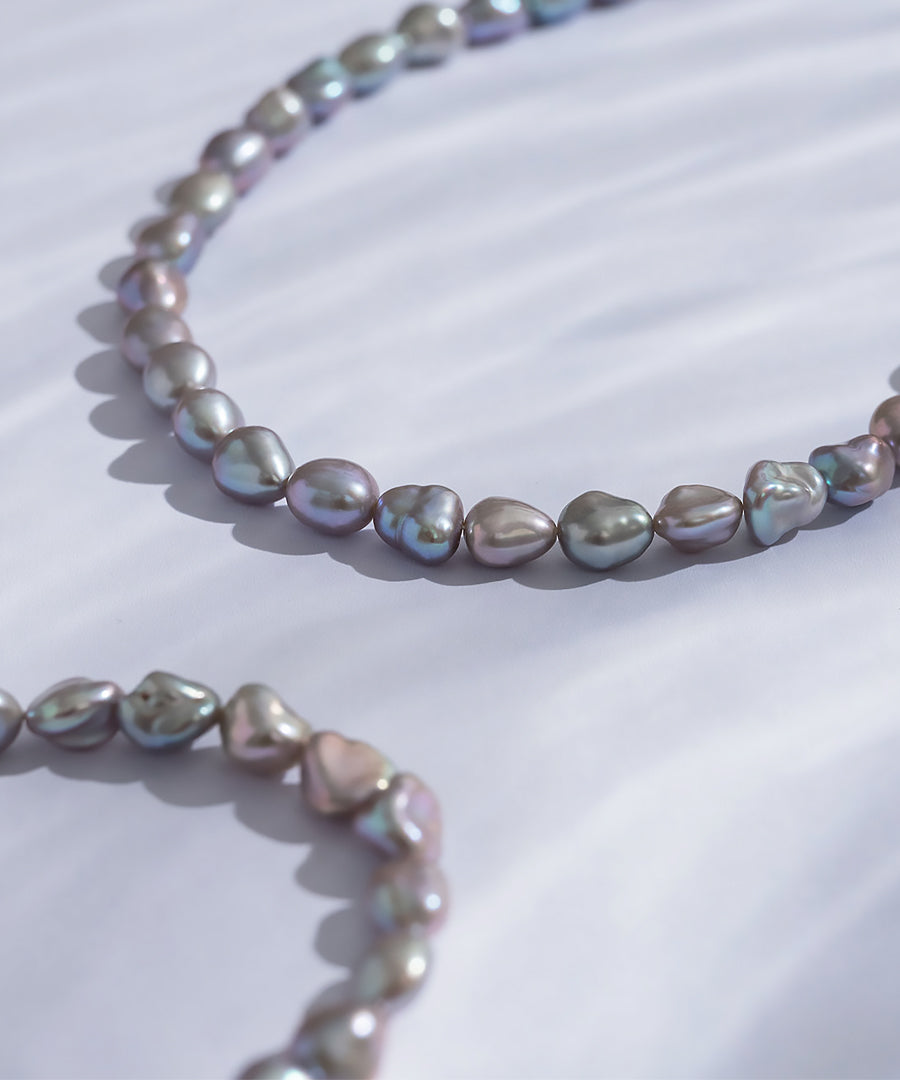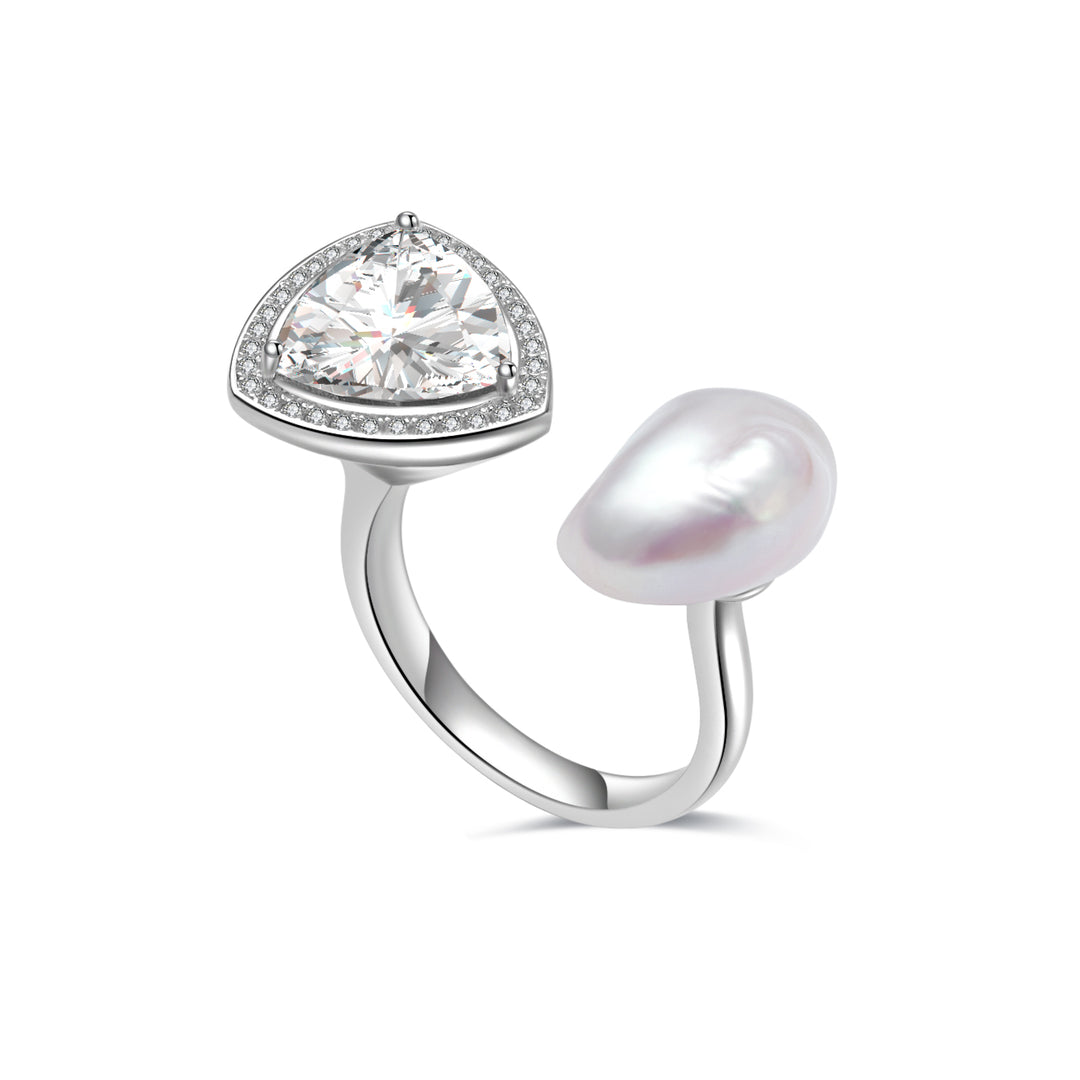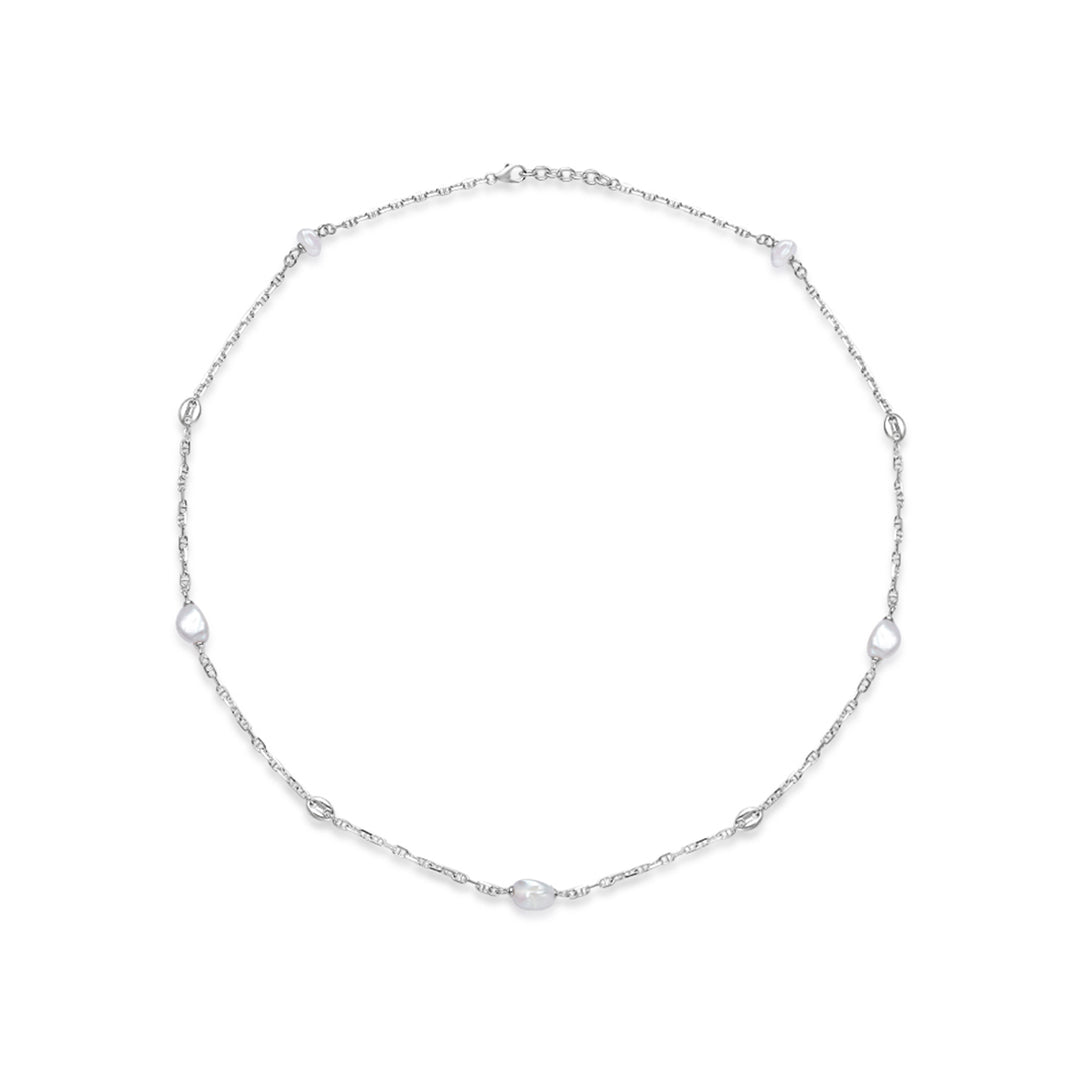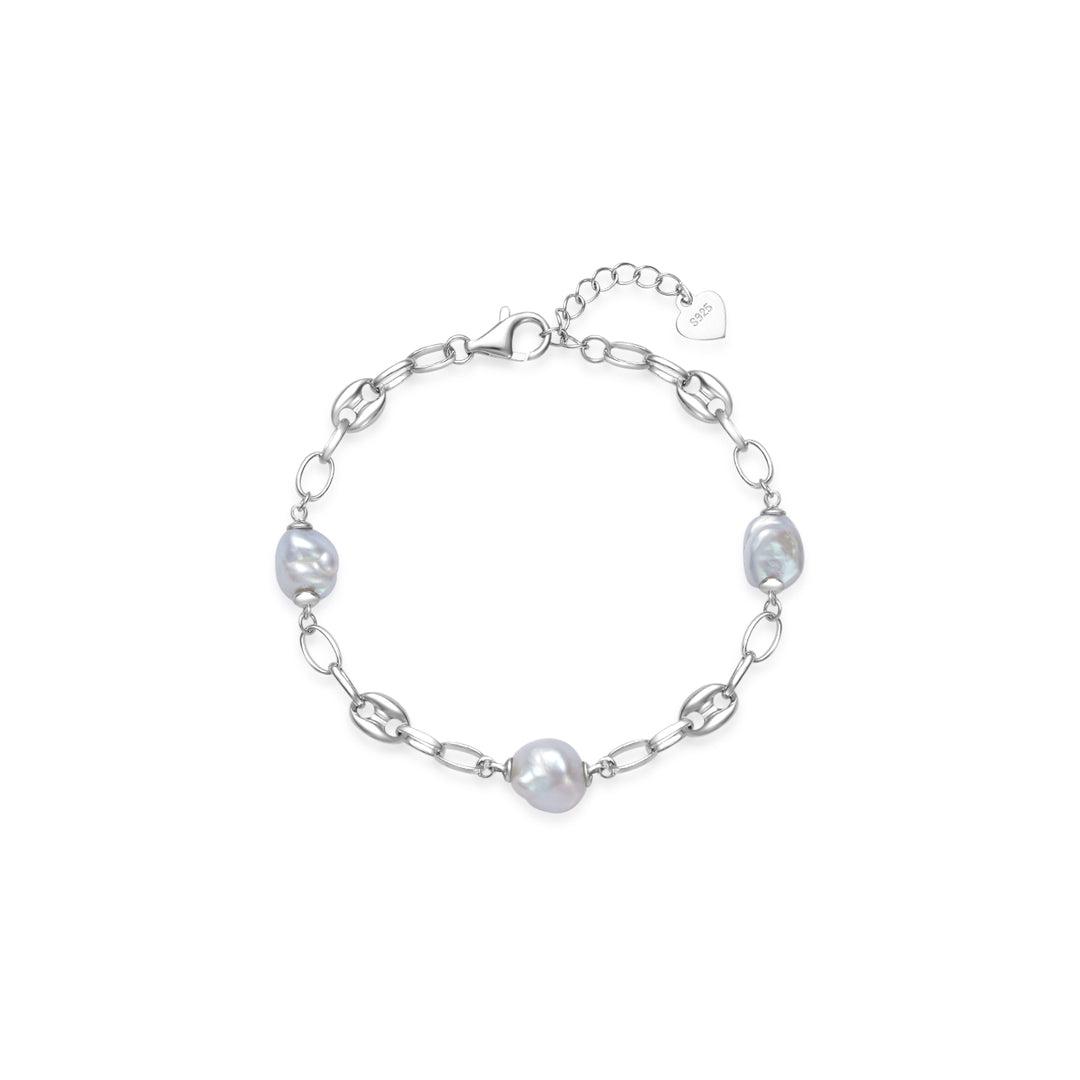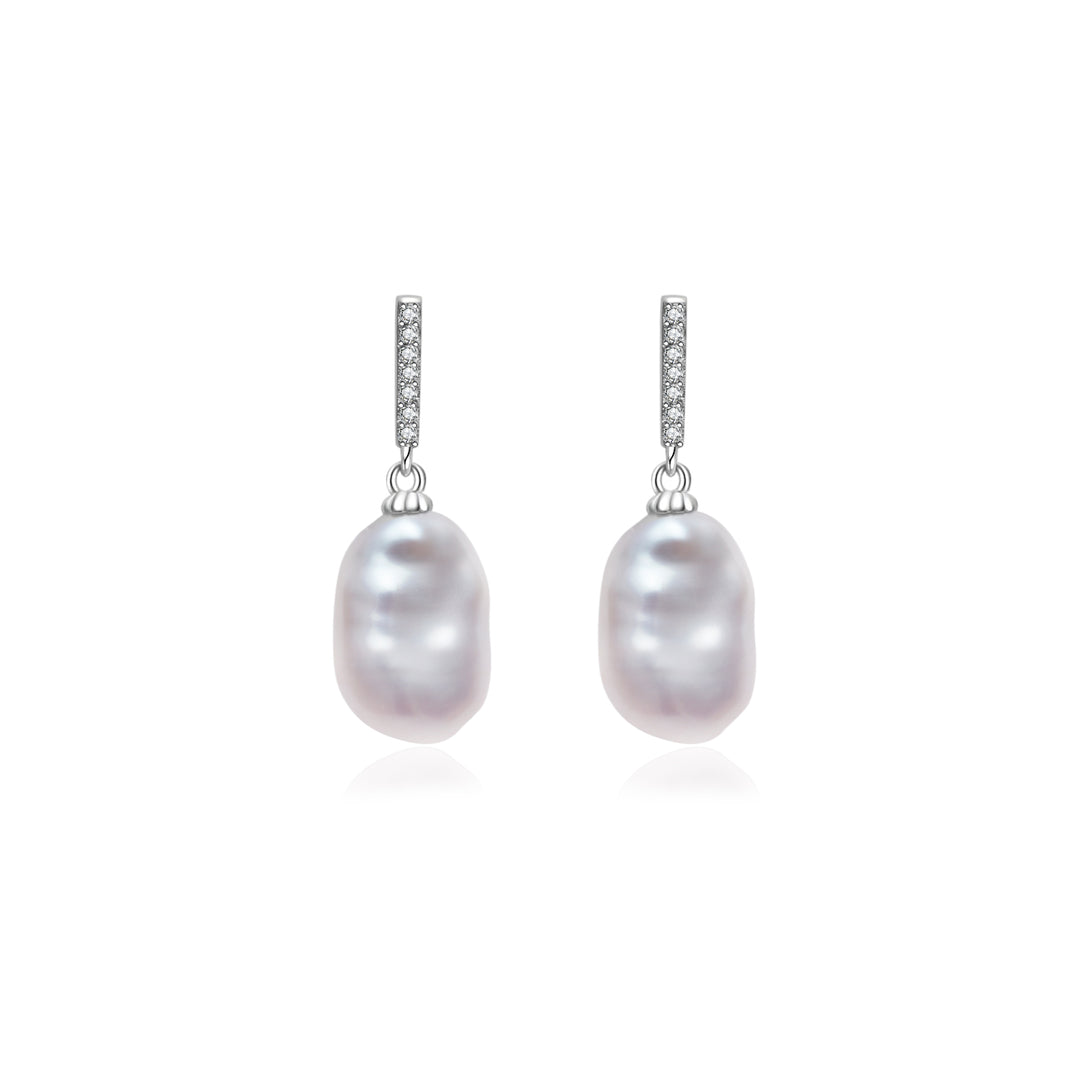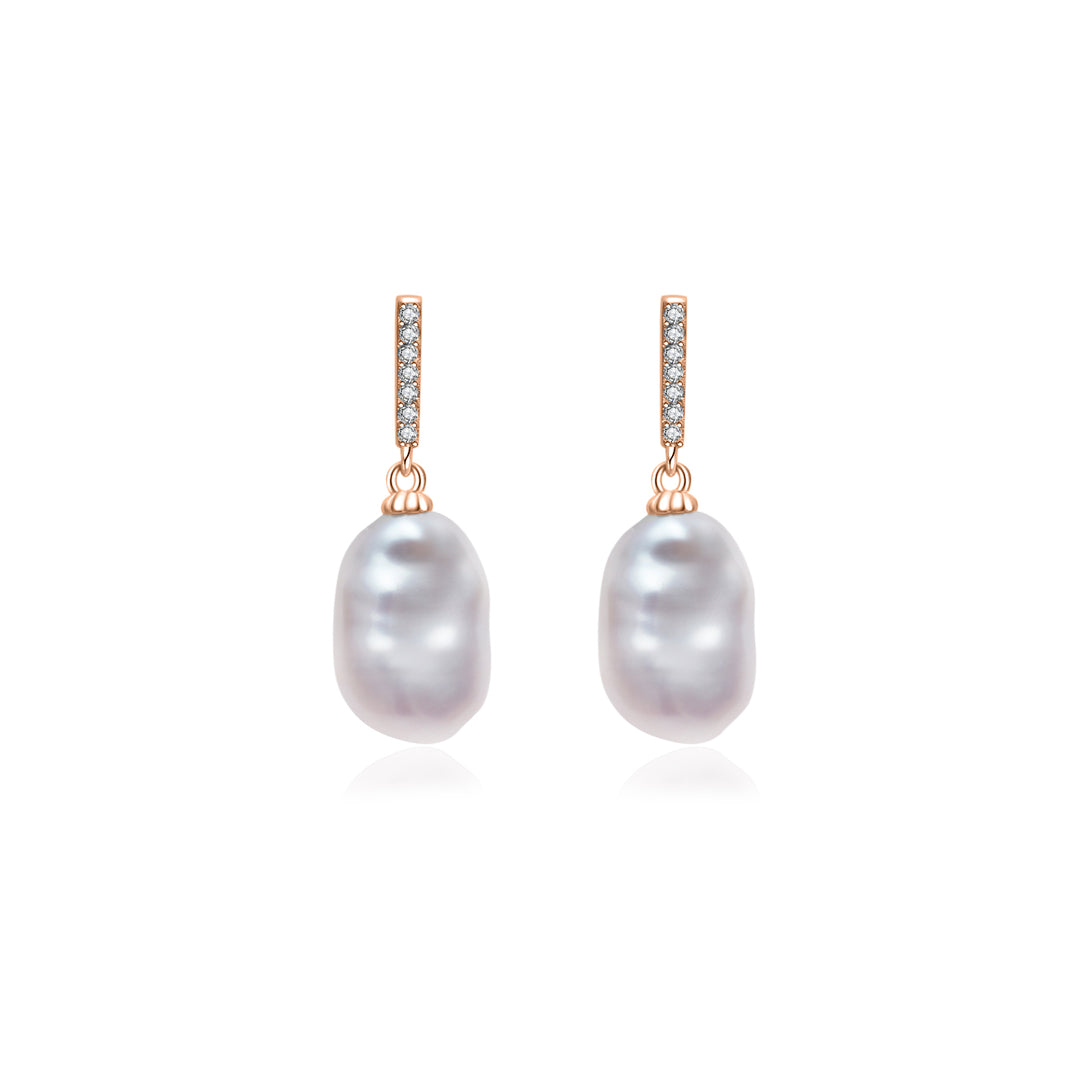KESHI PEARL
Keshi pearls, charmingly petite and devoid of a nucleus, usually emerge as delightful by-products during the process of cultivating pearls. In the realm of Japanese terminology, the term "keshinomi," which intriguingly also translates to "poppy," is employed to describe all pearls that mature without a nucleus. These pearls possess an exceptional allure, showcasing an array of one-of-a-kind forms and dimensions.
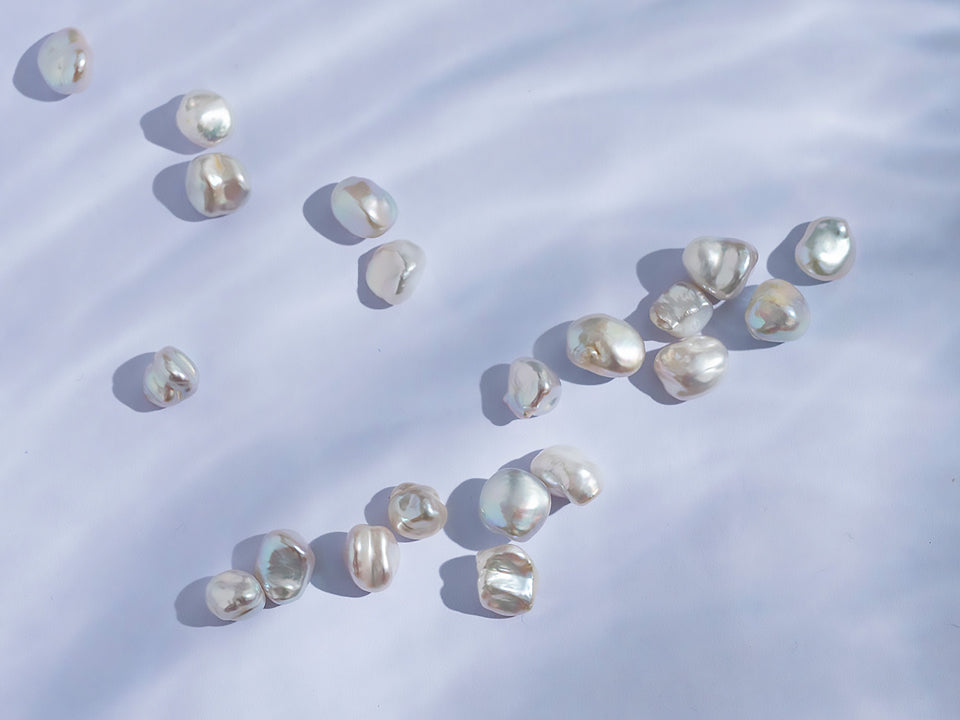
Origin
The term "keshi" initially found its roots in Japan, designating pearls that lacked nuclei. The emergence of Akoya pearl cultivation during the 1920s in Japan yielded a plethora of diminutive pearls, often with a soft gray hue, arising as serendipitous outcomes. It's worth noting that Keshi pearls do not fall under the categorization of natural pearls. This is because Keshi pearls inherently arise as by-products of the cultivation process, distinct from the organic occurrence of natural pearls.
Formation & Cultivation
An oyster is entrusted with a tiny piece of tissue and a lustrous bead. Together, they weave a tale of elegance and beauty as a pearl sac emerges, with the bead at its heart, destined to become the nucleus of a cultured pearl. If the mollusk decides to part ways with the bead or the tissue piece and the bead drifts apart, the magic of nacre won't embrace the bead. Instead, it might give rise to a splendid surprise - a shimmering keshi pearl.
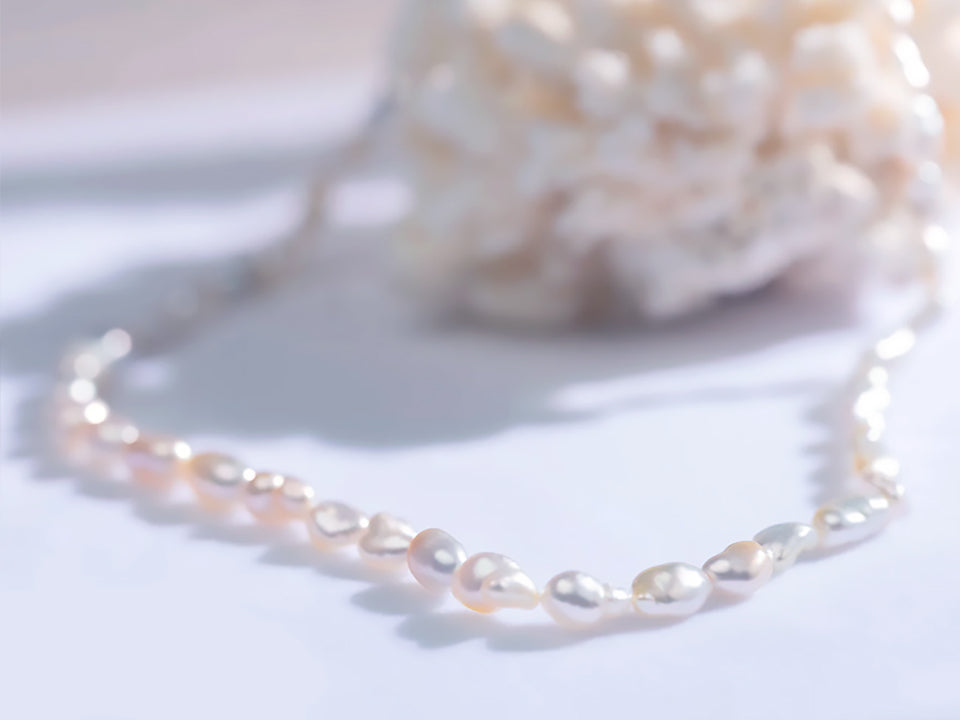
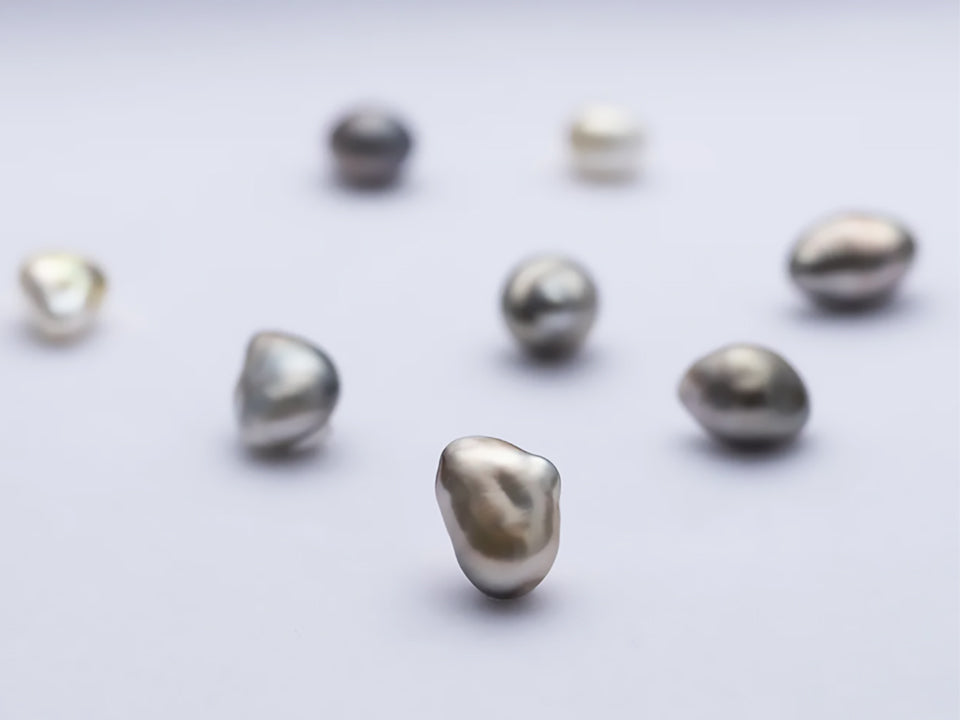
Qualities
Color: Off-white, champagne & silver blue
Size: Generally smaller in size compared to other types of pearl, ranging from 2 - 8mm.
Shape: Irregular with a flatter profile compared to Baroque pearls.
Lustre: Radiating an enchantingly high luster, a luminosity akin to the brilliance of a meticulously faceted gem, captivating with their mesmerizing optical
reflectance.
Value
Keshi pearls hold a special allure in the world of pearls, as they are composed entirely of pure, natural nacre. Given the inherent value of nacre, Keshi pearls are often priced by weight, much like precious gemstones.
